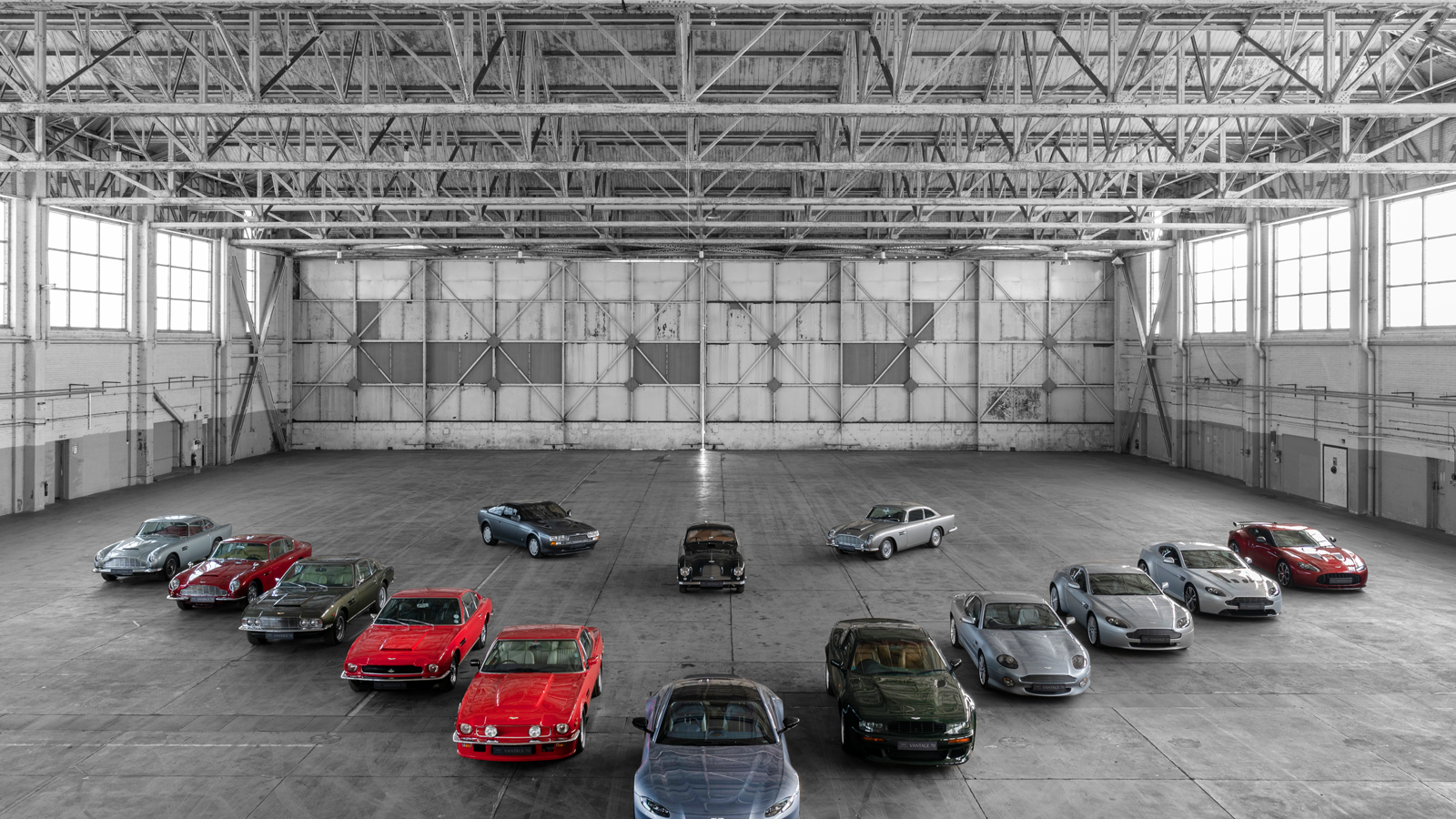
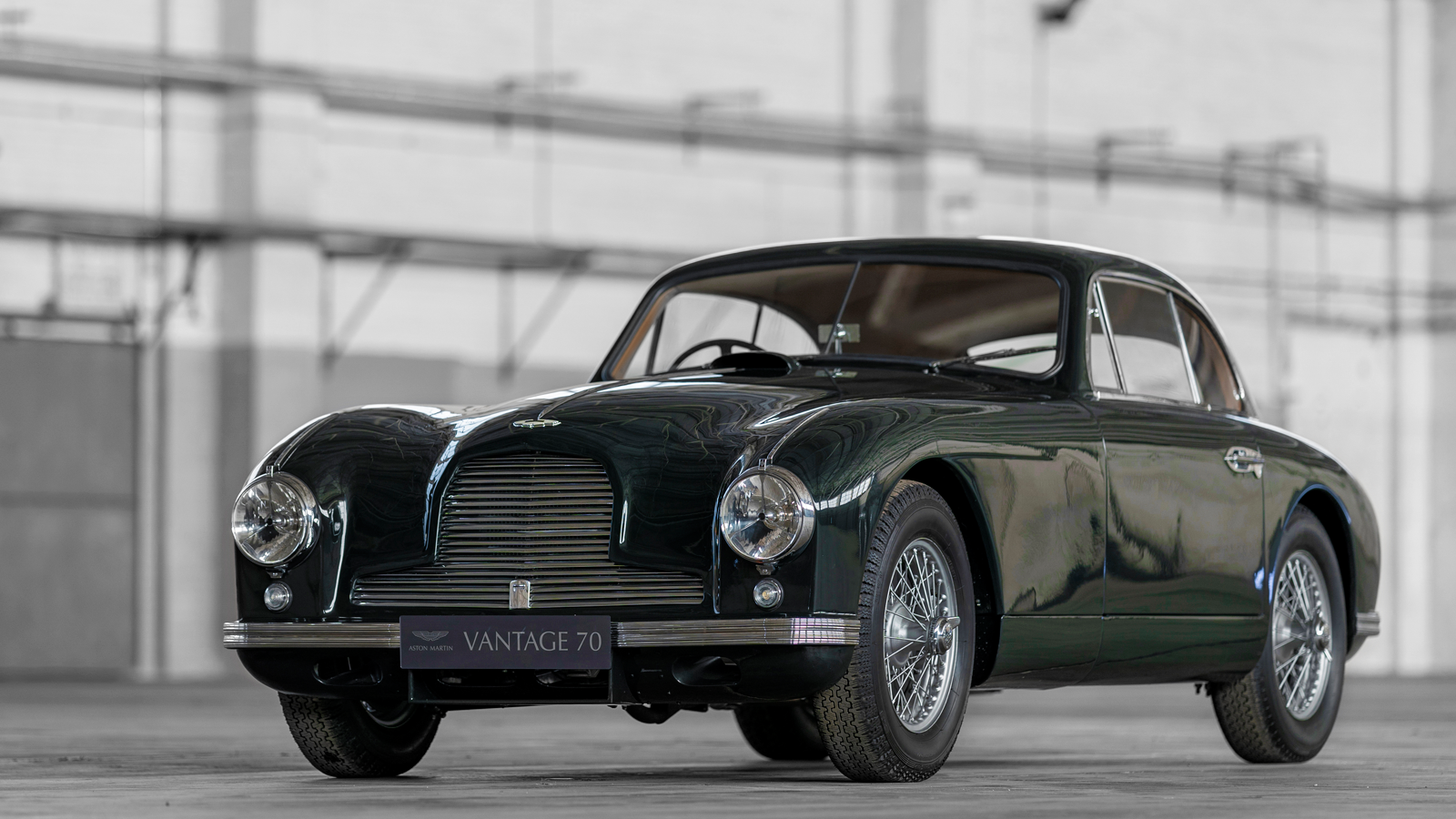
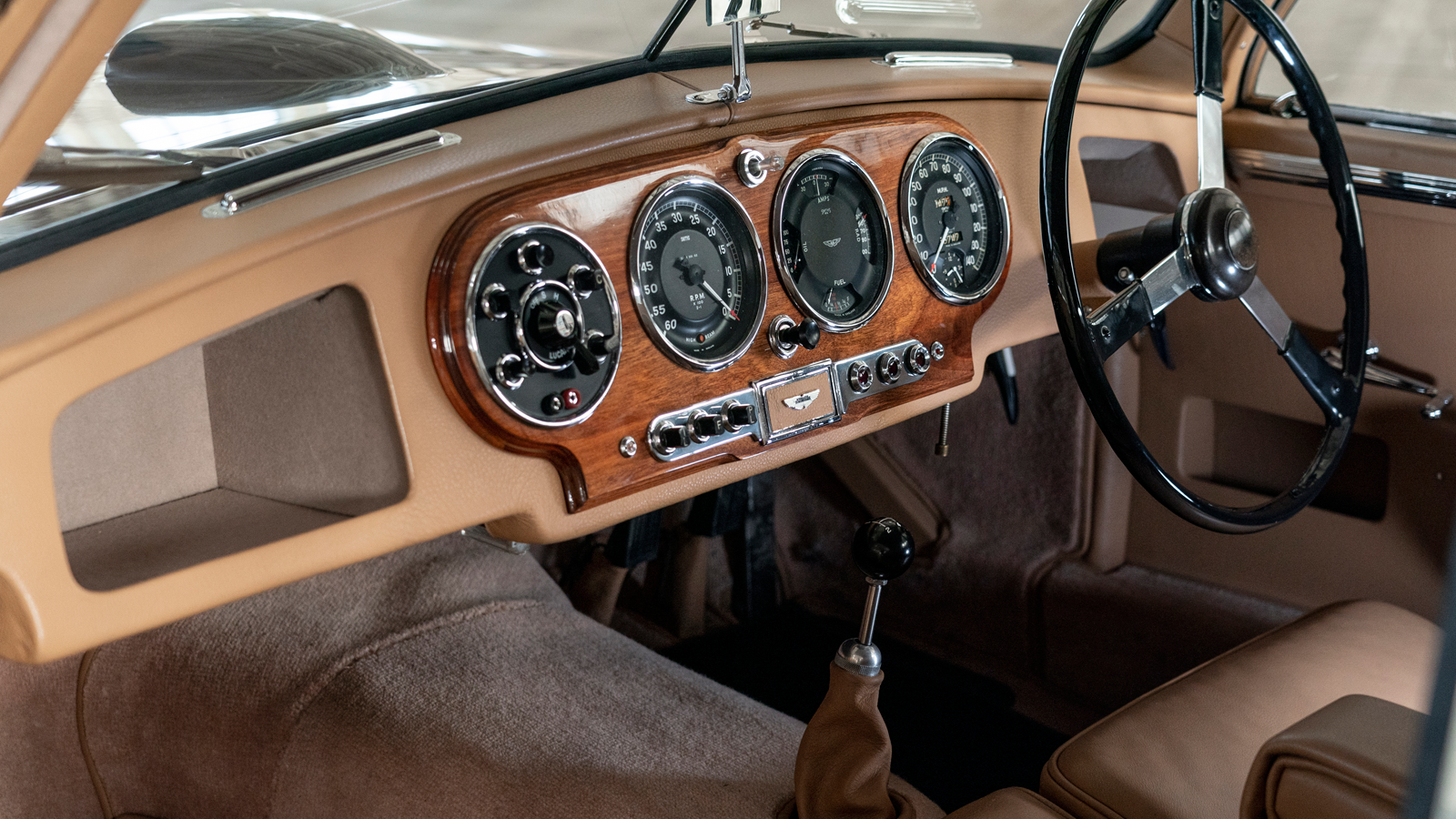
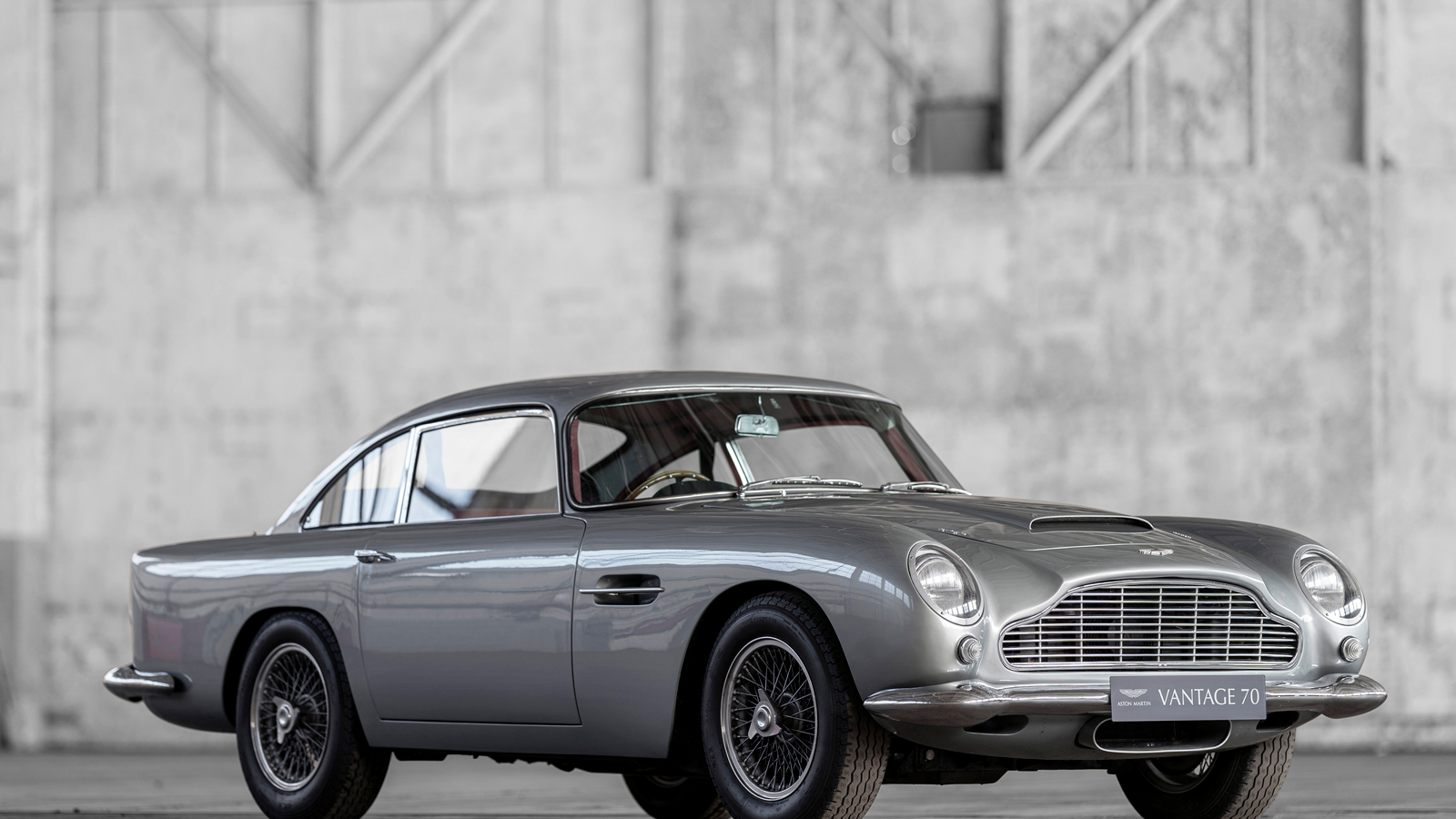

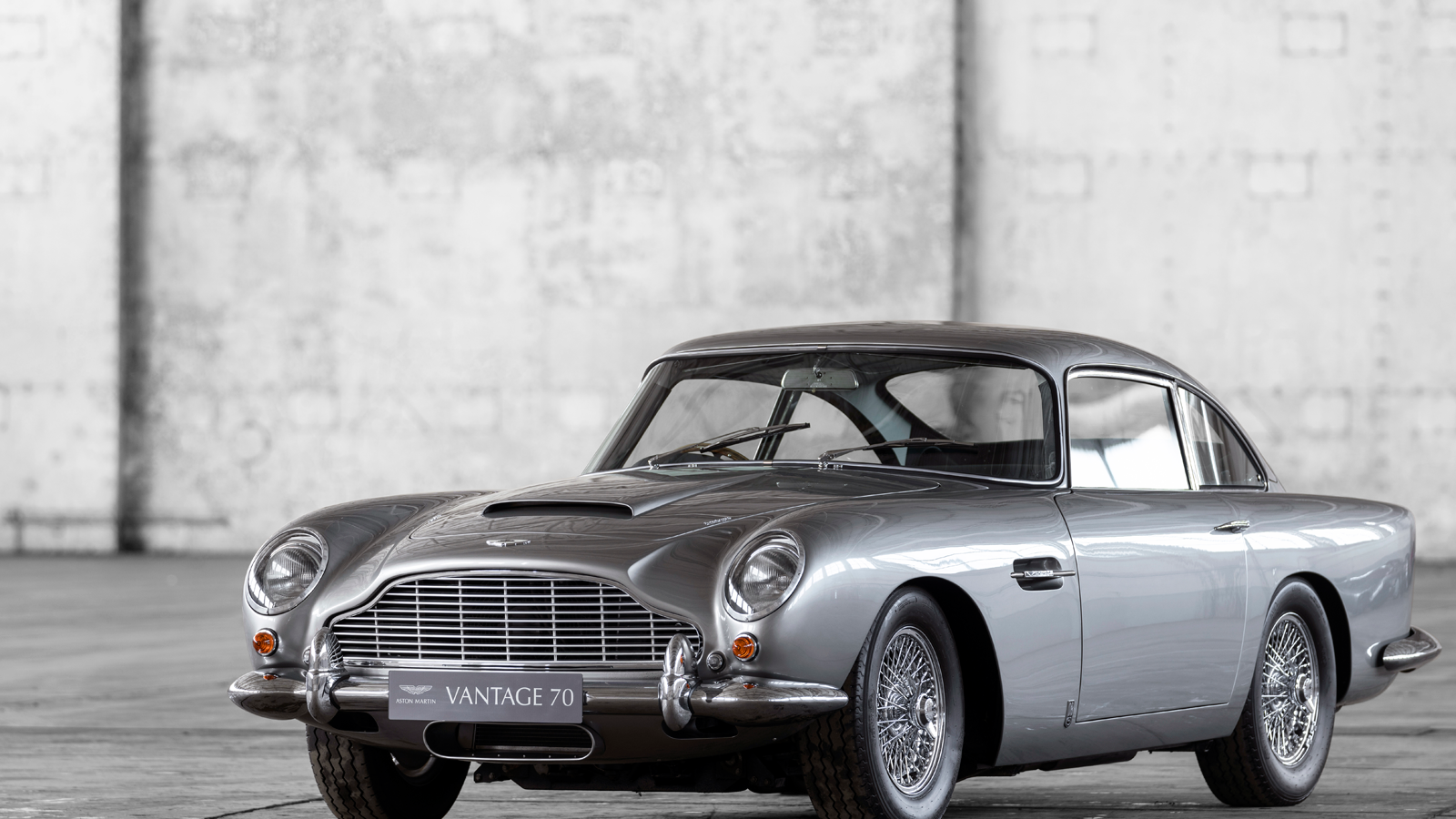



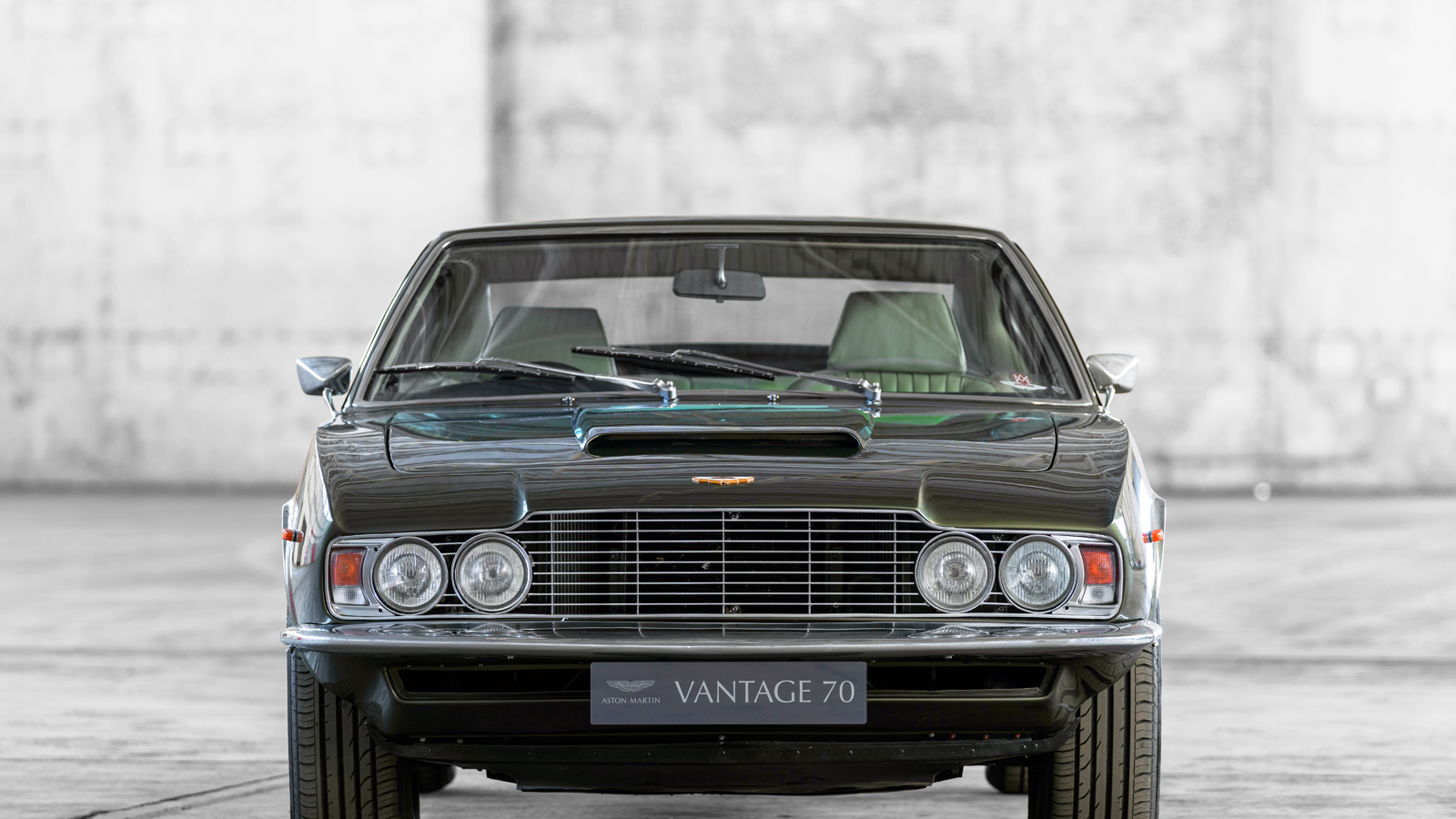
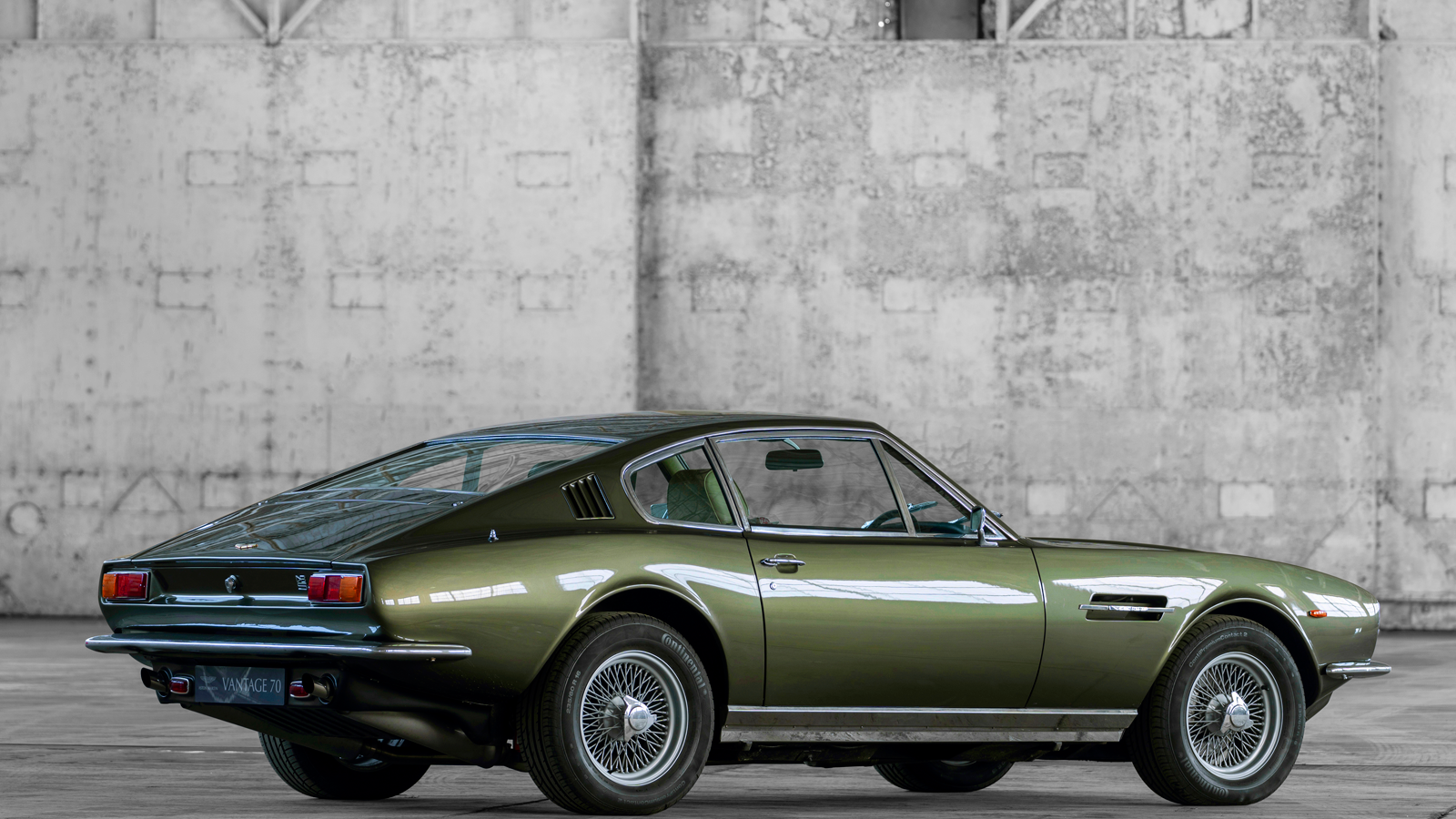
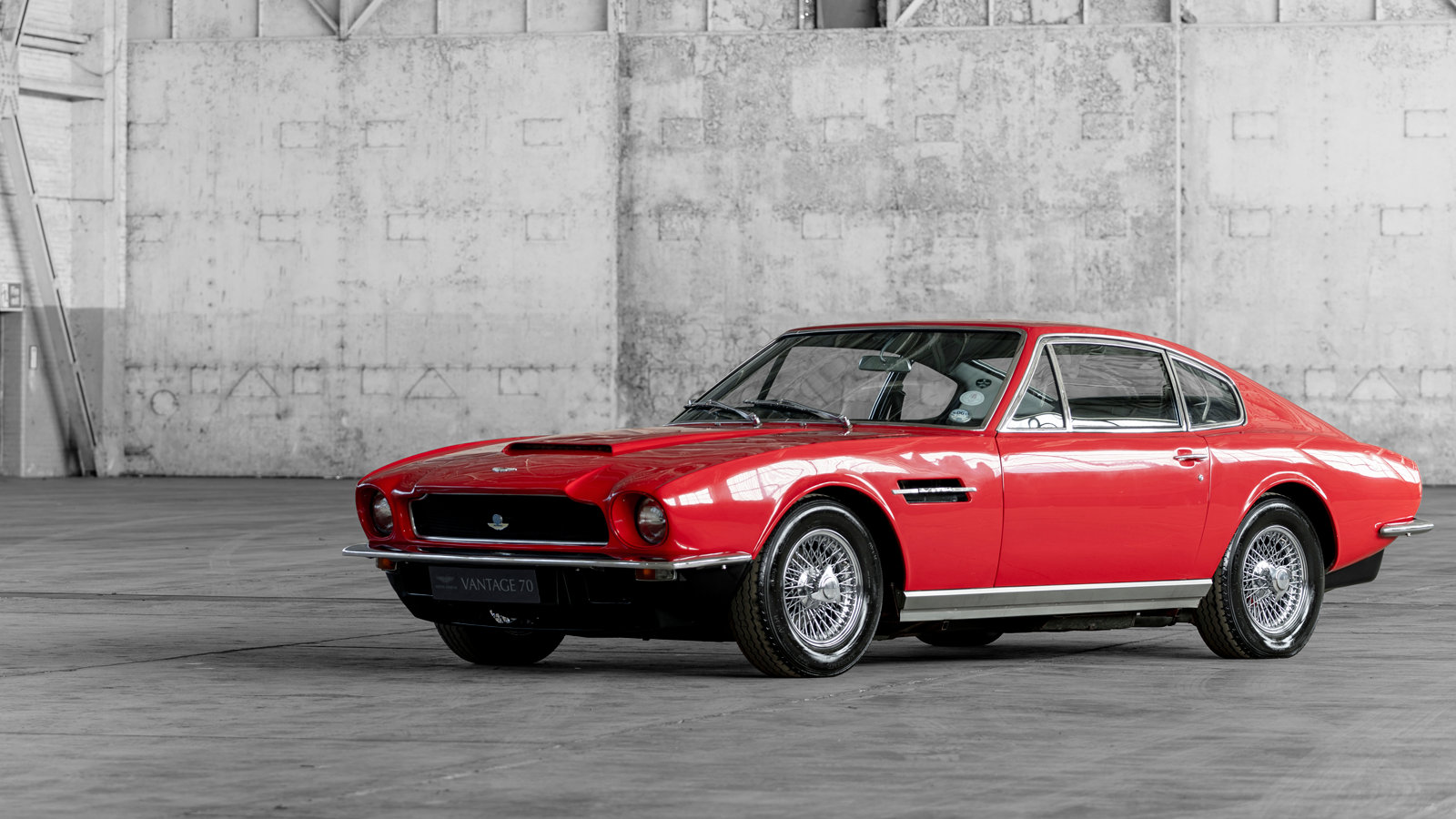
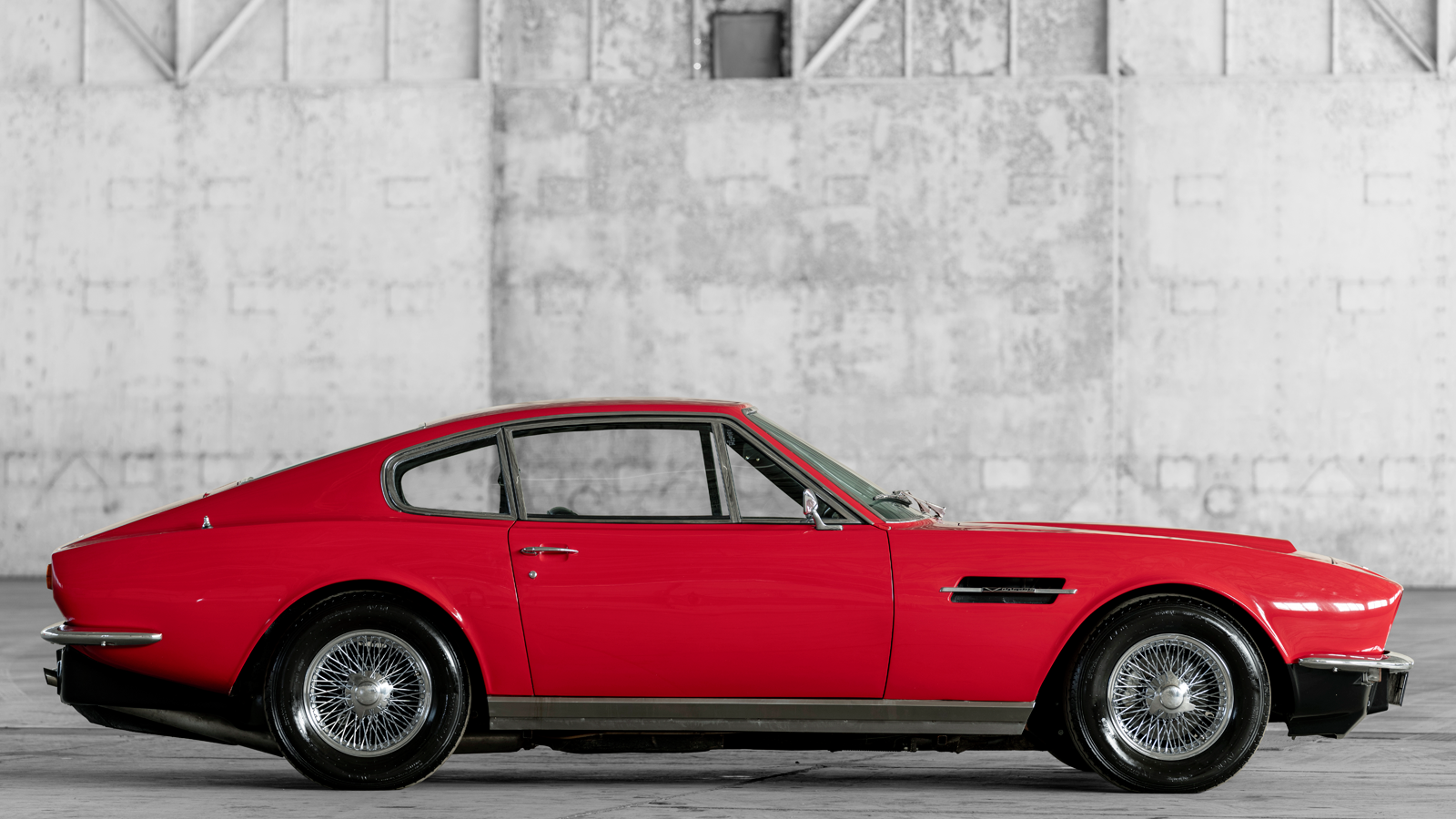
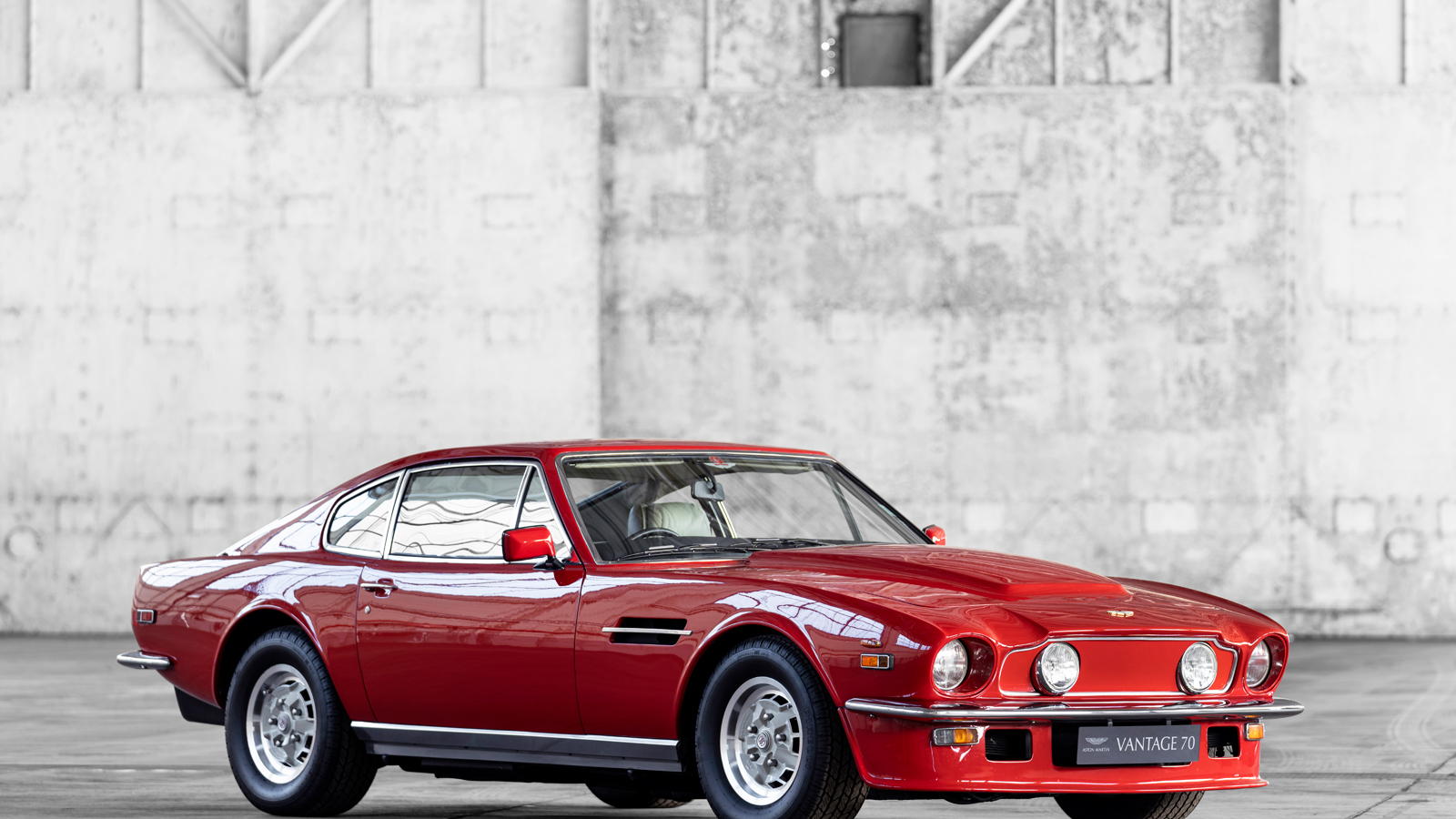
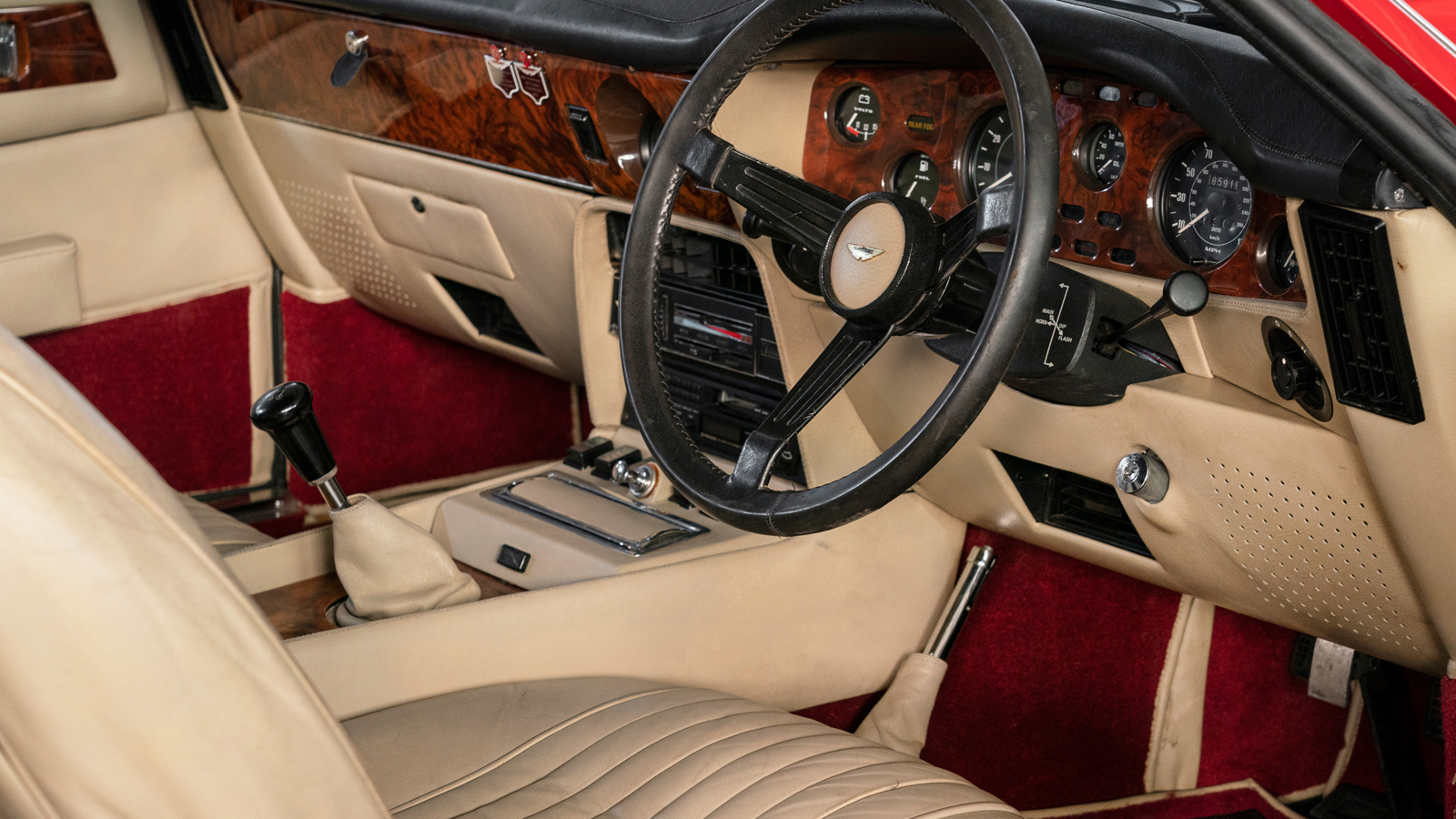

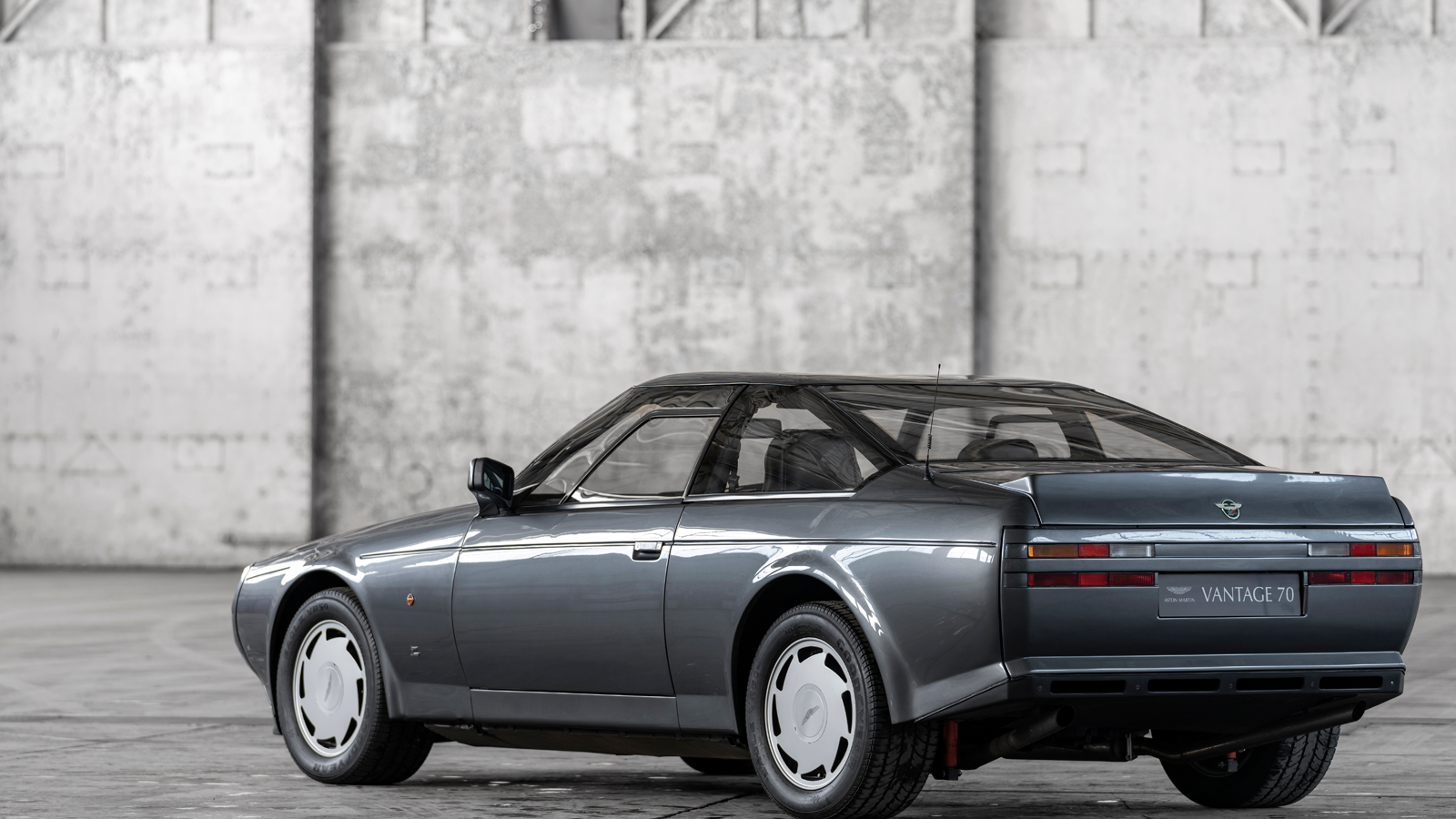
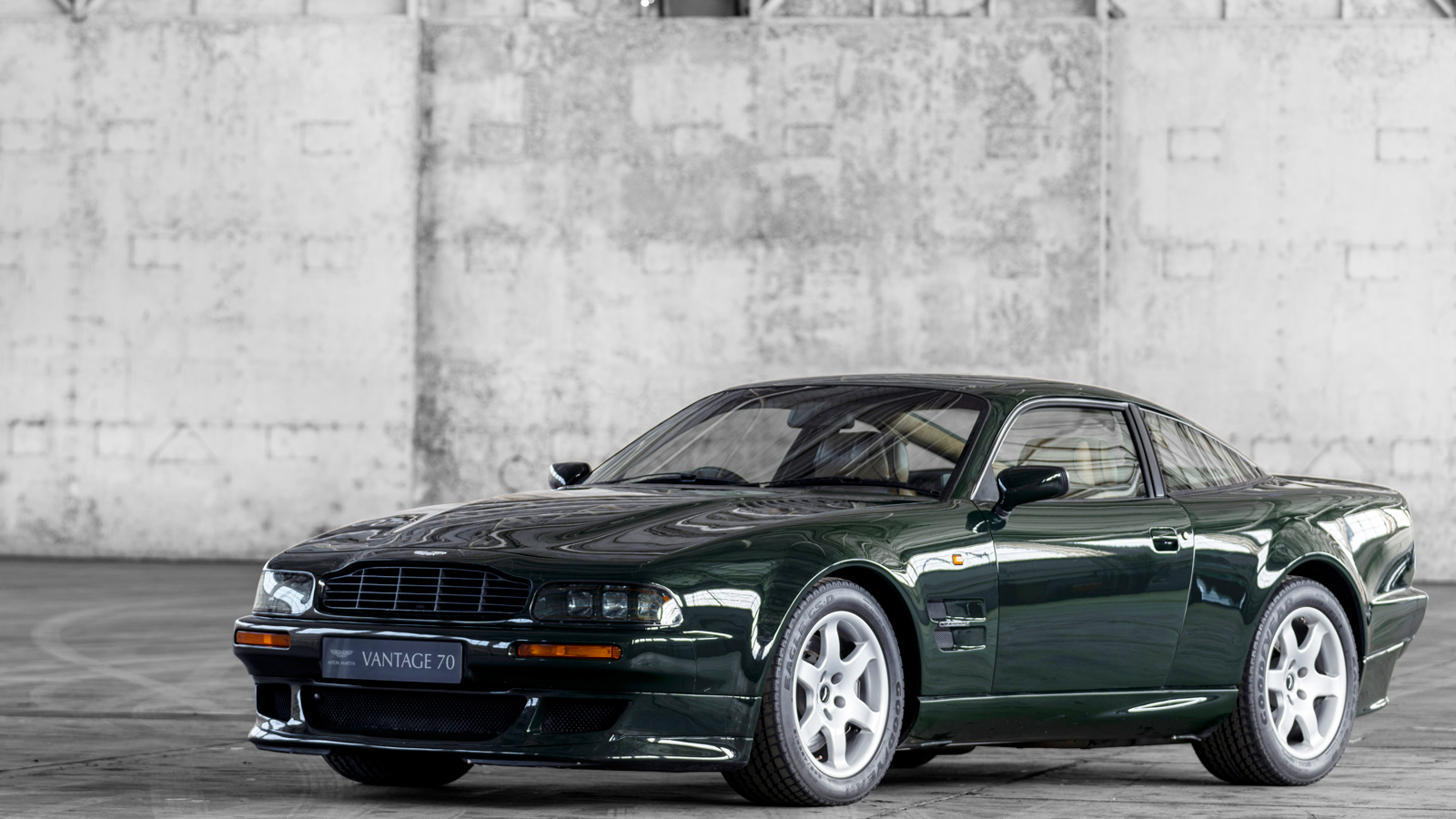
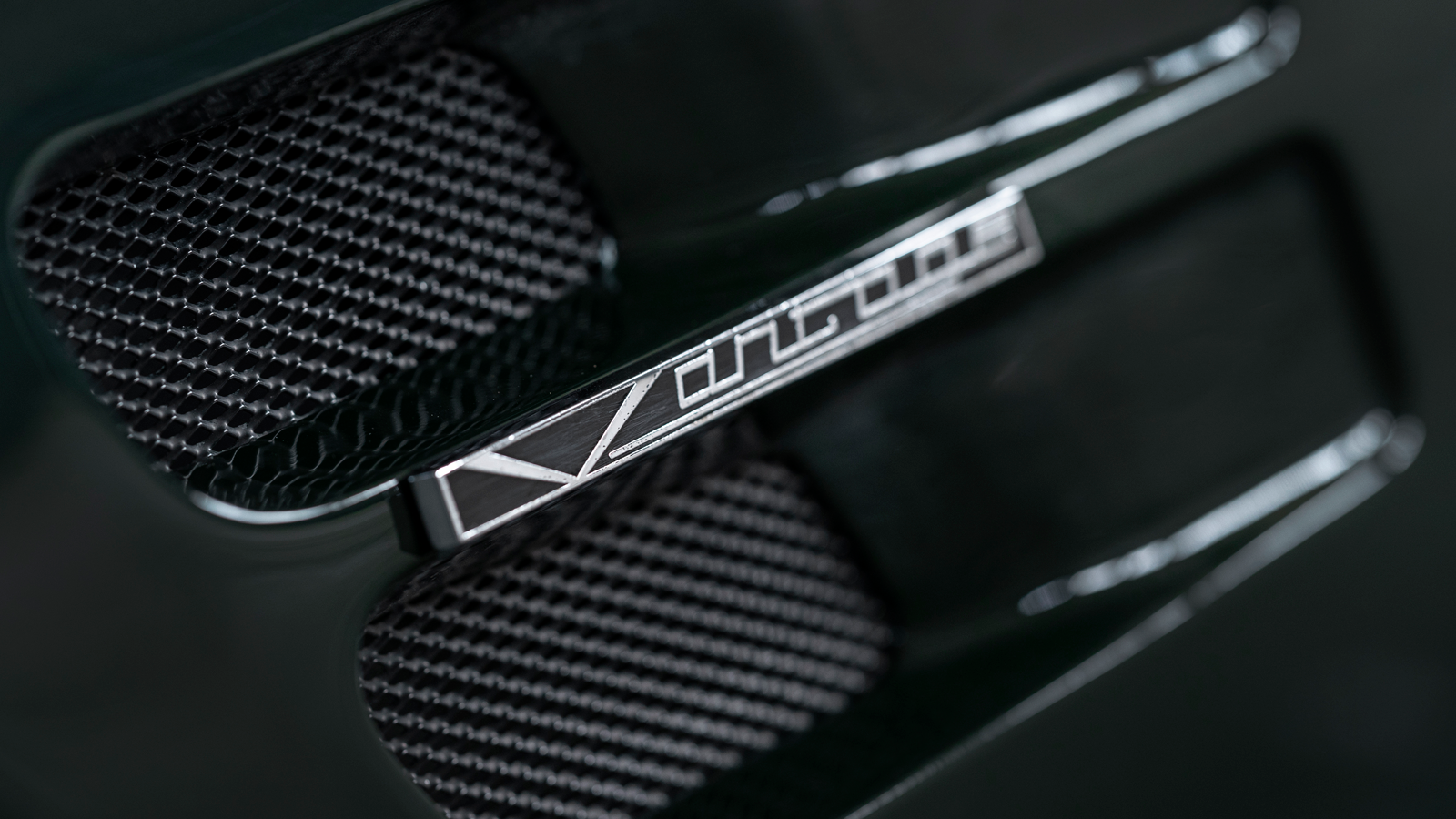

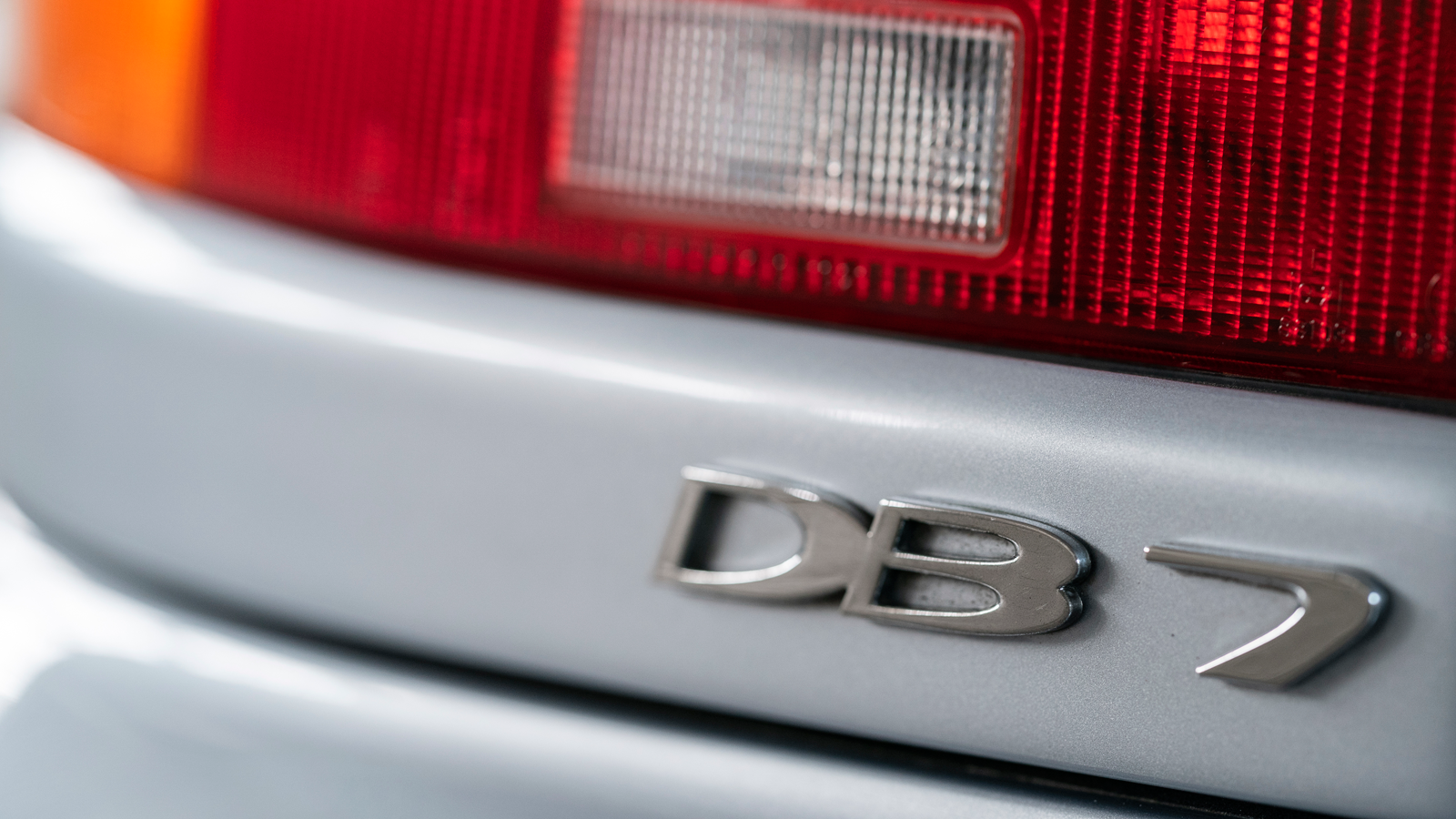
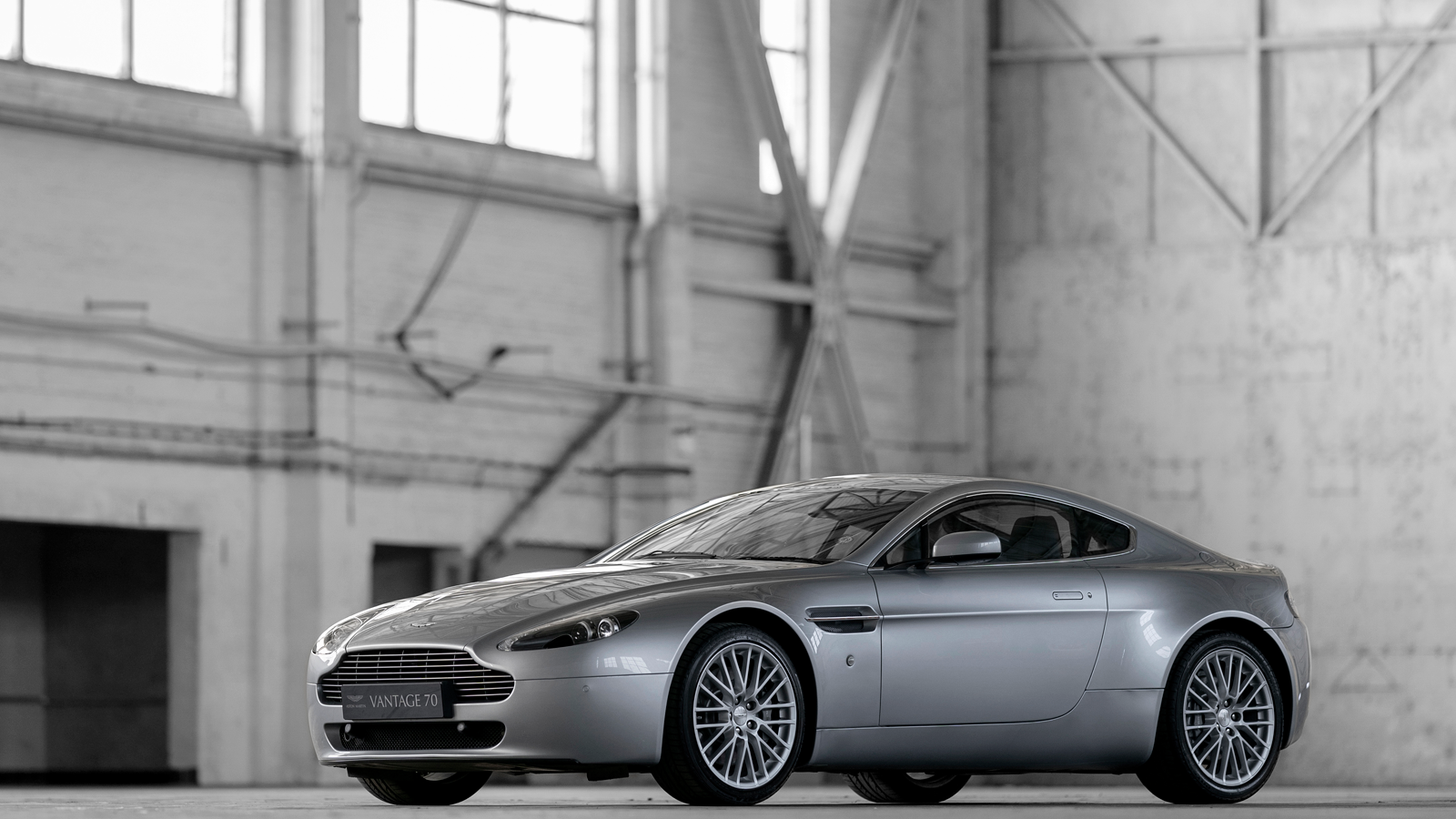

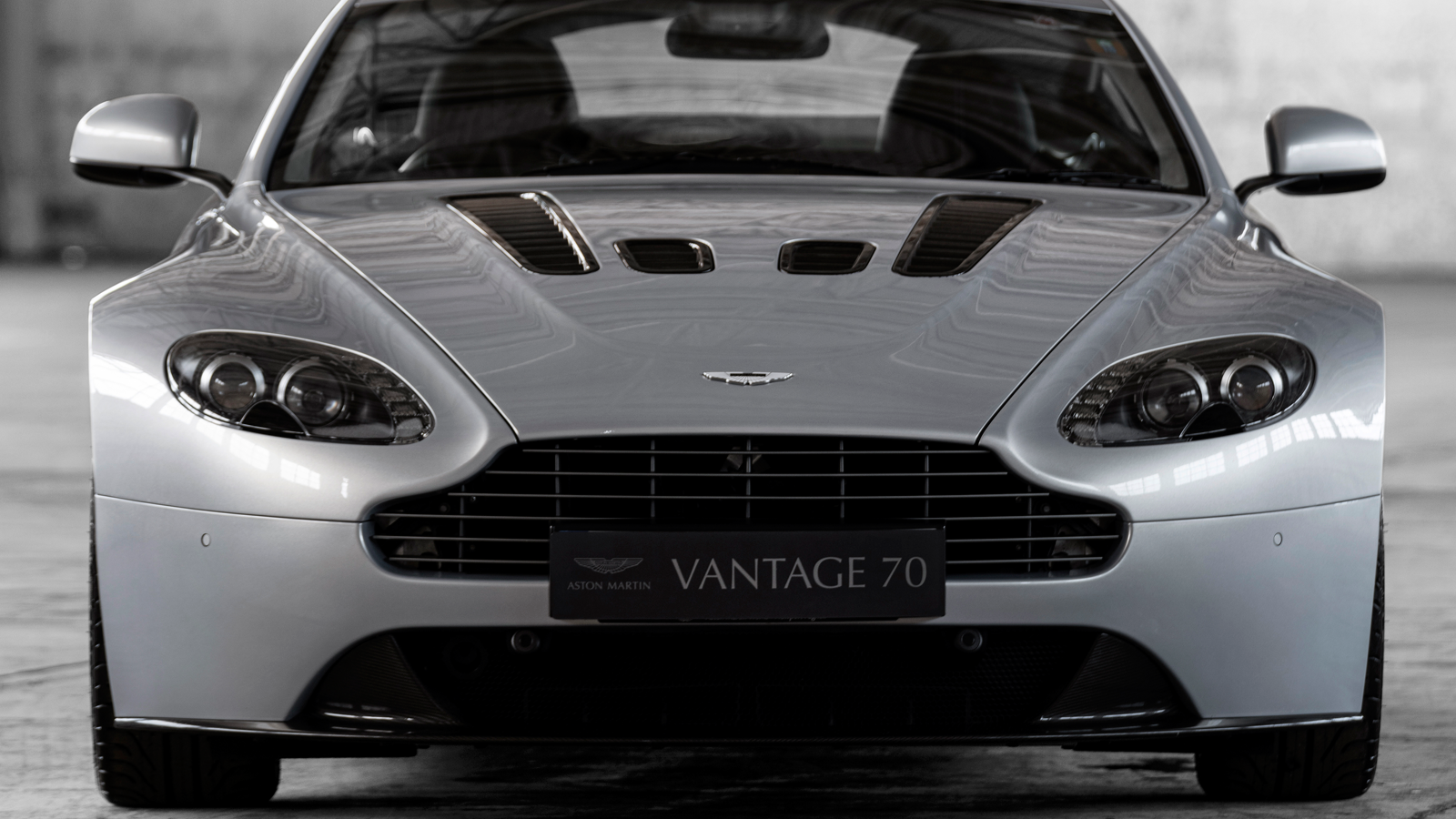
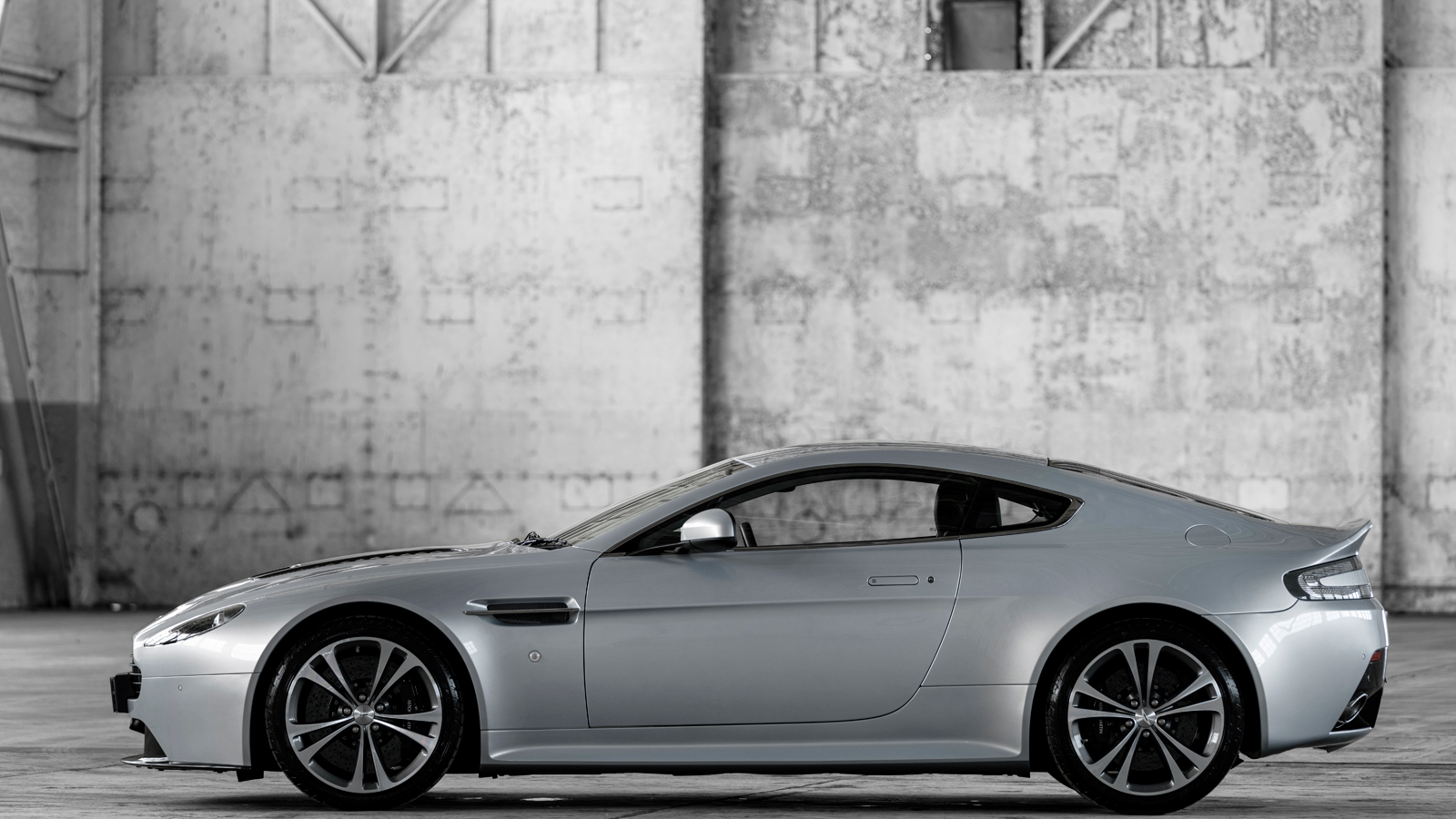

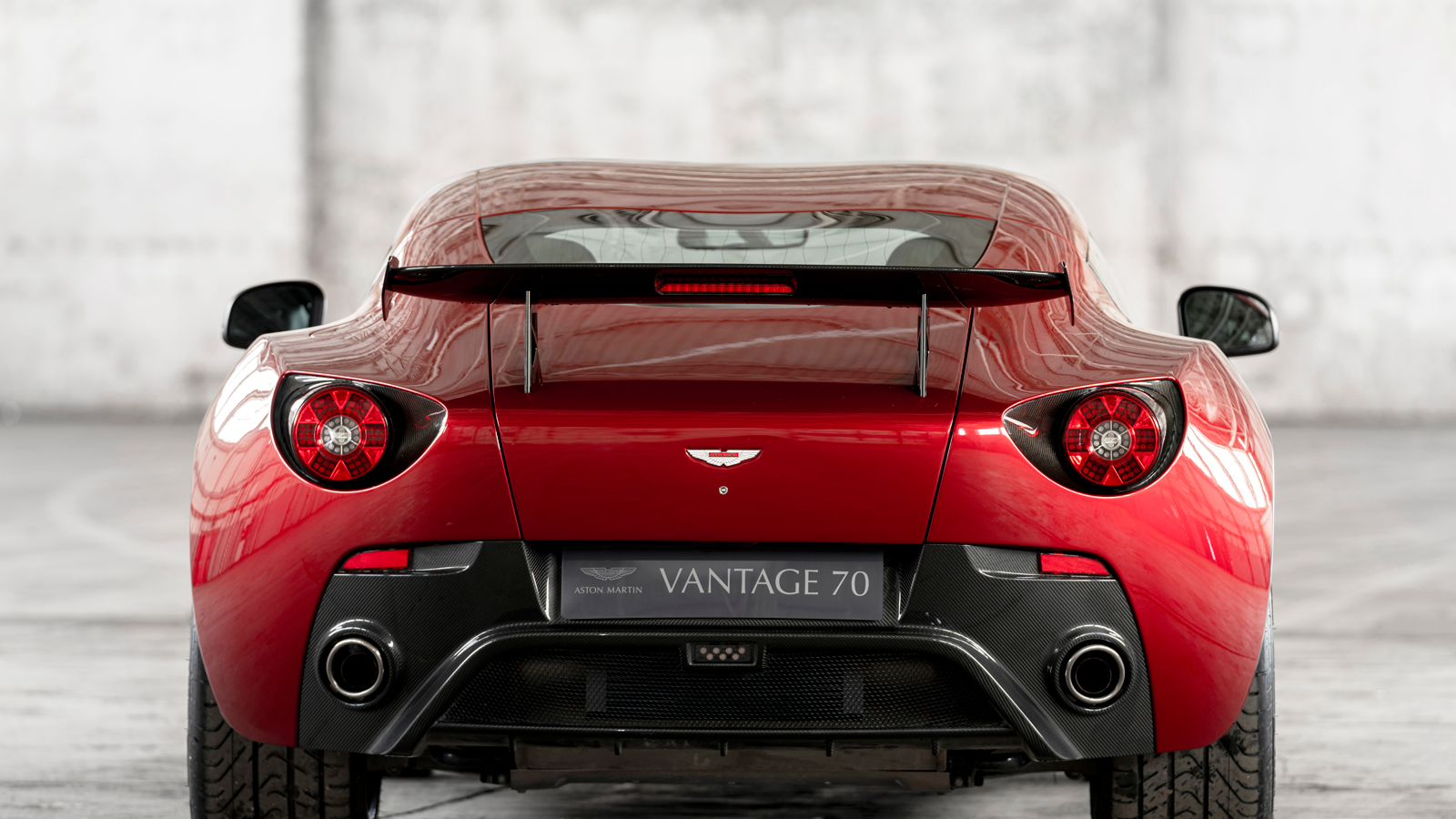
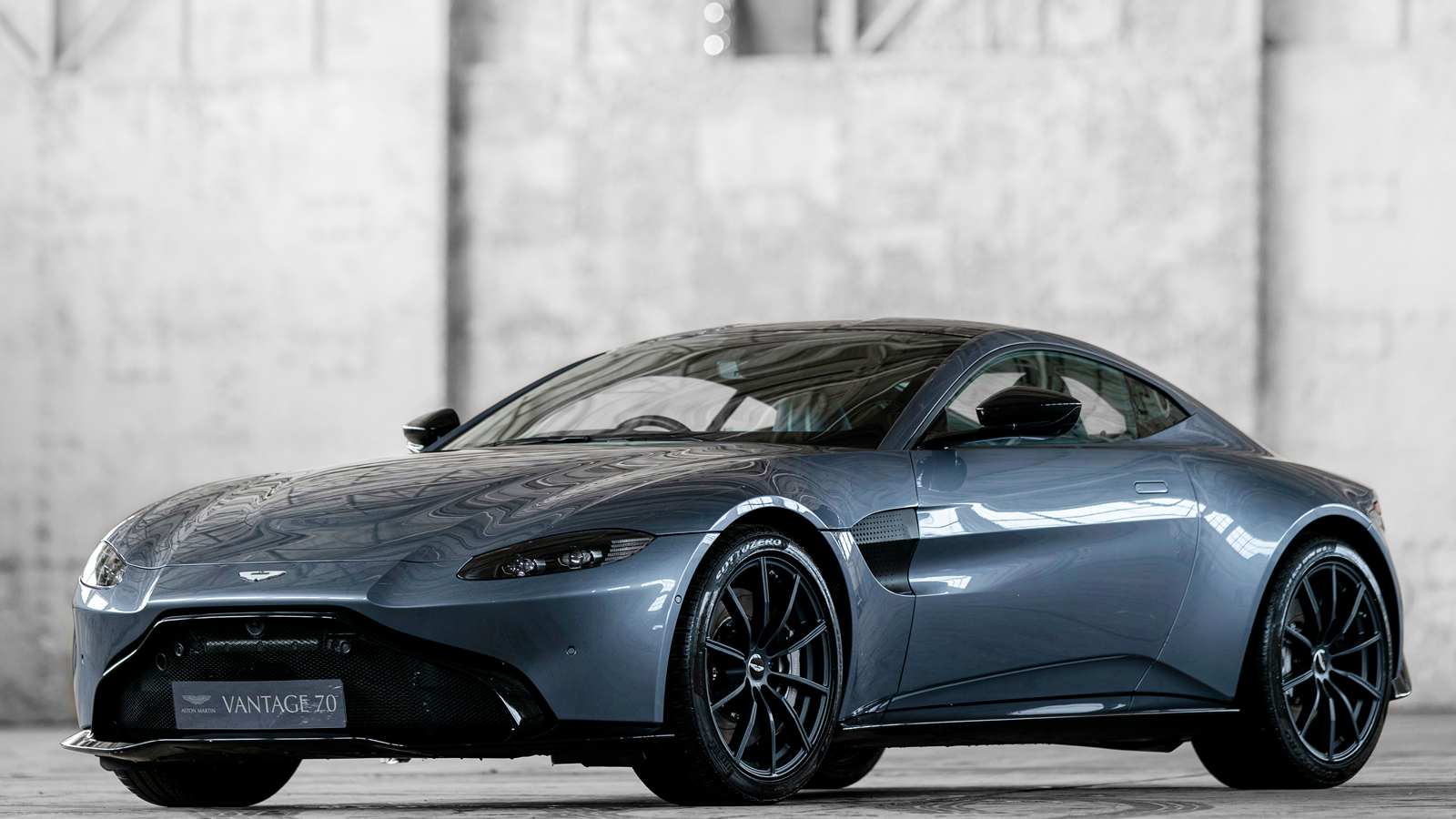
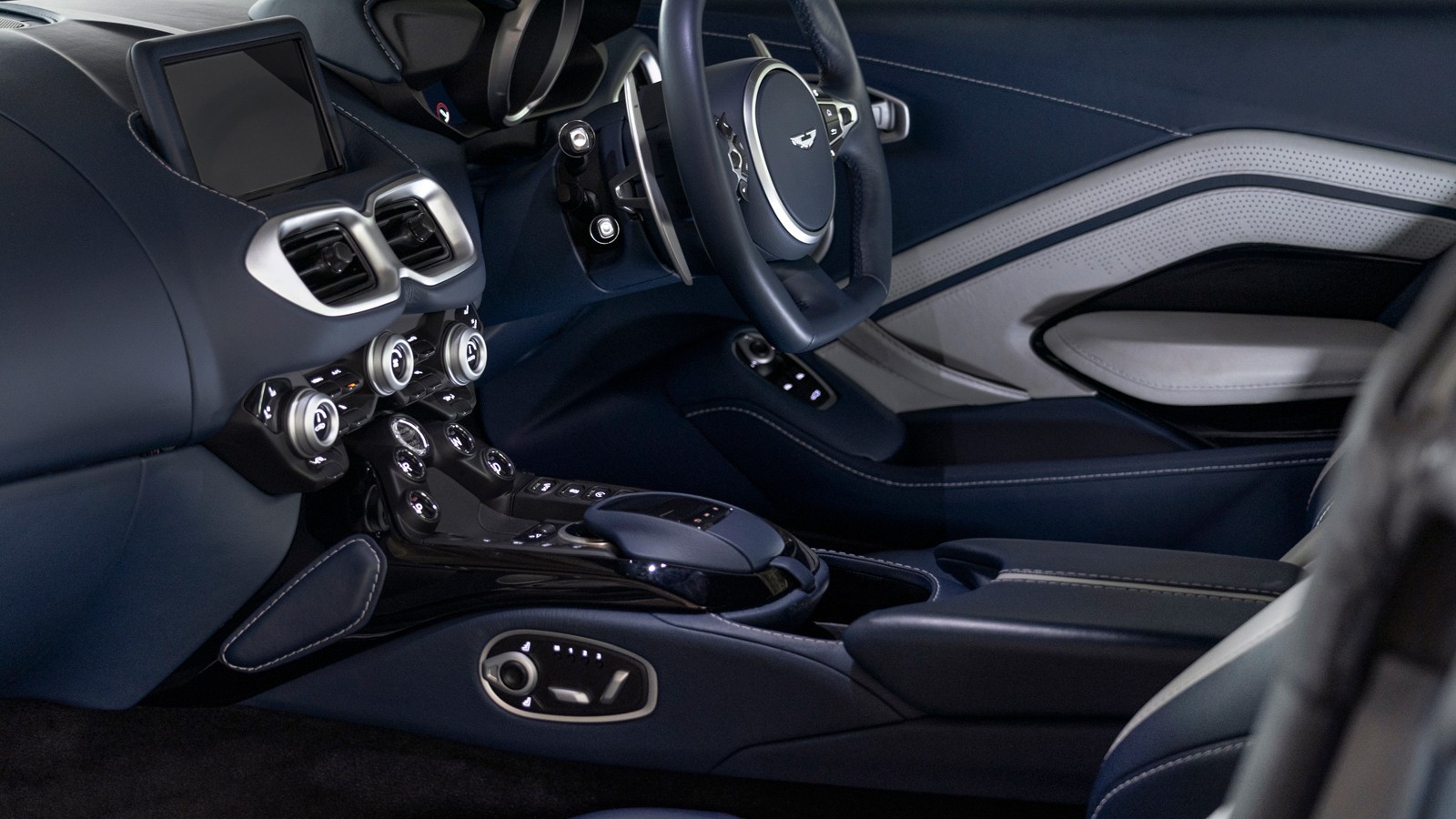
Seven decades and still going strong!
That most British of automotive icons, the Aston Martin Vantage is celebrating its 70th birthday in 2020.
In that time, in excess of 36,000 cars bearing the Vantage name have been handcrafted before heading out into the world to delight enthusiasts – that’s more than a third of all the sports cars built by the luxury British brand.
So join us as we pay tribute to the Aston Martin Vantage.
Aston Martin DB2 Vantage
It all started here, back in 1950, in the form of the DB2 which in Vantage specification became the first car to carry that illustrious name.
‘Vantage’ on this model meant an uprated engine, bigger carburettors and a higher compression ratio helping take the 2.6-litre engine from around 105bhp up to 125bhp.
Aston Martin DB2 Vantage (cont.)
Fewer than 250 of these Vantage-spec DB2s were built at the company’s factory in Feltham, Middlesex, in both saloon and drophead coupé form.
But it would be almost 10 years until another Vantage was revealed.
Aston Martin DB4 Vantage
The year was 1961 and the DB4 Vantage made its debut alongside the rest of the DB4 Series IV cars.
Fitted with the ‘Special Series’ engine with an extra carburettor, revised cylinder heads and a higher compression ratio, power increased by around 10% over the standard car to 266bhp.
Aesthetically, it has the DB4GT’s faired-in headlights, as well as aluminium trim.
Aston Martin DB4 Vantage (cont.)
The DB4 Series V Vantage arrived in 1962 and it was one of these that starred in the James Bond film Goldfinger, being the basis for the ‘gadget’ car.
In all, 135 DB4 Vantages, plus six DB4GT Vantages, rolled off the Newport Pagnell production line.
Aston Martin DB5 Vantage
A mere 68 examples of this Vantage – possibly the most coveted of all – were produced, from a total DB5 production run of 887.
In addition, of the 123 DB5 Convertibles built just eight had the Vantage engine, making this variant rarer still.
Aston Martin DB5 Vantage (cont.)
Those who paid the £158, plus purchase tax, extra over the cost of a standard DB5 for one with a Vantage engine got triple Weber carburettors and a 325bhp output – that’s an increase of 40bhp.
Many standard DB5s have since been upgraded to Vantage specification, making original ones yet more desirable.
Aston Martin DB6 Vantage
Just as the DB5 started the tradition of being discreetly badged ‘Vantage’, so was its predecessor, the DB6.
It was a similar formula, too, the uprated DB6 using the same 4.0-litre, 325bhp straight-six as its DB5 predecessor – well, if it ain’t broke, don’t fix it…
Aston Martin DB6 Vantage (cont.)
In all, 335 MkI and 70 MkII DB6 Vantage models were built, plus 29 and 13 Volantes, respectively.
Of course, it’s well known that Prince Charles, the Prince of Wales, has a DB6-based Volante MkII converted to run on bioethanol.
Aston Martin DBS Vantage
William Towns’ angular DBS Vantage of 1967 signalled a big change for the marque’s aesthetics.
However, under the bonnet, the same six-cylinder, 3995cc Tadek Marek-designed engine remained, in standard or Vantage tune.
Aston Martin DBS Vantage (cont.)
That wasn’t the original plan, though.
Aston Martin had hoped to drop a new V8 in to power the DBS, but it wasn’t ready in time. Still, 290 of these striking two-doors were built.
AM Vantage
The introduction of the model simply known as the ‘AM Vantage’ in April 1972 brought the car buying public a DBS revised to feature two headlamps instead of four.
AM Vantage (cont.)
But that wasn’t where the changes stopped. Going contrary to the tradition of the Vantage name, it wasn’t the most powerful car in Aston Martin’s contemporary line-up, but the least potent.
Only 70 were built.
Aston Martin V8 Vantage
It was all change again when the V8 Vantage landed in 1977 – and the clue was in the name.
Power came courtesy of a 300bhp V8 that in Vantage spec upped the ante to a not inconsiderable 380bhp, with a 170mph top speed and a Ferrari Daytona-beating 0-60mph time – no wonder it was called “Britain’s first supercar”.
Aston Martin V8 Vantage (cont.)
The V8 Vantage’s might called for a stiffer chassis, adjustable dampers, a larger front anti-roll bar and more, while outside the front air dam, blanked-off grille with twin Cibie driving lights, bonnet bulge and bootlid spoiler made sure everyone knew what this was.
Inside? Well, it’s pure ’70s luxury!
Aston Martin V8 Vantage Zagato
Aston’s V8 Vantage might have reigned for a very long time – from 1977 right through until 1990 – but it also spawned another gem.
Shorter, with even bolder looks, the Aston Martin V8 Vantage Zagato was revealed at the 1986 Geneva Motor Show and production also lasted until 1990.
Aston Martin V8 Vantage Zagato (cont.)
In all, 52 saloon and eight wind-in-your hair Vantage Volante examples of this Zagato creation were built.
And, yes, we do mean ‘saloon’ – it is the term used in contemporary Aston Martin nomenclature, but to the rest of us it means a coupé.
Aston Martin V8 Vantage V550
The Virage-based Vantage of the ’90s was a true heavyweight grand tourer. Indeed it had what were at the time the biggest brakes fitted to a road car.
Built between 1993 and 1999, the V8 Vantage V550 took its name from its twin-supercharged V8 engine that pumped out 550bhp along with 500lb ft of torque – that meant a near-200mph top speed and a 0-60mph time of just 4.6 secs.
Aston Martin V8 Vantage V550 (cont.)
It looked the part, too, aggressive detailing such as its deep front spoiler also working to channel air through the radiator before exiting via the louvres on the bonnet and the side vents, while all-leather seats cosseted those lucky enough to be inside.
Fewer than 250 V8 Vantage V550s were produced.
Aston Martin DB7 V12 Vantage
At the 1999 Geneva Motor Show, the Ian Callum-penned DB7 became the next Aston Martin model to bear the famous ‘Vantage’ badge.
Most previous Vantages used tuned versions of the engines found in the standard offerings, but not this time. And the new 5.9-litre, 48-valve, all-alloy V12 delivered 420bhp and 400lb ft of torque.
Aston Martin DB7 V12 Vantage (cont.)
Understandably, the DB7’s chassis was uprated to cope with its 184mph top speed and 5.0-sec 0-60mph time (when fitted with the six-speed, close-ratio manual gearbox – a five-speed auto was available, too).
DB7 V12 Vantage coupé production reached 2091 which, when added to the Volante and GT, set a new record for any Aston Martin.
Aston Martin V8 Vantage
The AMV8 Vantage Concept broke cover at the 2003 Geneva show, but the public had to wait a further two years to be able to buy the next member of the family, the V8 Vantage.
Using the VH architecture first seen on the DB9 but with a new 4.3-litre, quad-cam, 32-valve, dry-sump V8, which developed 380bhp as well as 302lb ft of torque, it could complete the 0-60mph sprint in a mere 4.9 secs.
Aston Martin V8 Vantage (cont.)
Later in its life, a bigger, 4.7-litre engine took the model’s output up to 420bhp, shaving 0.2 secs off its 0-60mph time.
Production ran from 2005 until 2017, with 15,458 coupés and 6231 Roadsters built – it became the single biggest sales success in the marque’s history.
Aston Martin V12 Vantage
More power wasn’t enough because in 2009, four more cylinders joined the party with the V12 Vantage.
It started life as the V12 Vantage RS concept car that was unveiled at the opening of the manufacturer’s new Design Centre at Gaydon, in December 2007.
Aston Martin V12 Vantage (cont.)
That quad-cam, 5935cc, front mid-mounted, all-aluminium alloy V12 gave the car 510bhp at 6500rpm, plus 420lb ft of torque at 5750rpm.
That meant 0-60mph in just 4.2 secs and a 190mph top speed – and it was followed in 2013 by the even more potent V12 Vantage S.
Aston Martin V12 Vantage Zagato
Aston Martin unveiled its latest collaboration with Zagato, based on the V12 Vantage, at the Concorso d’Eleganza Villa d’Este in May 2011.
It carries some of the coachbuilder’s trademark features, such as the ‘double-bubble’ roof and short overhangs.
Aston Martin V12 Vantage Zagato (cont.)
Its aluminium and carbonfibre body gave it more than a hint of a racer – and so it proved, finishing a not-to-be-sniffed-at fifth and sixth at the Nüburgring 24-hour race.
Aston Martin Vantage
Which brings us up to date with Aston Martin’s Vantage story.
The current model was launched in late 2017, described by boss Dr Andy Palmer as, “the Aston Martin pure driving machine enthusiasts have been waiting for”.
This time power comes from a 503bhp/505lb ft, 4.0-litre, twin-turbo V8 engine paired with a rear-mounted eight-speed automatic gearbox, helping it to achieve 0-60mph in 3.5 secs onto a 195mph top speed.
Aston Martin Vantage (cont.)
This Vantage is also the first Aston Martin production car to have an electronically controlled differential with torque vectoring – which is very impressive, but a world away from the first car to carry this famous name 70 years ago.
And we’re sure this won’t be the last Vantage. Where will the name be 70 years from now?
